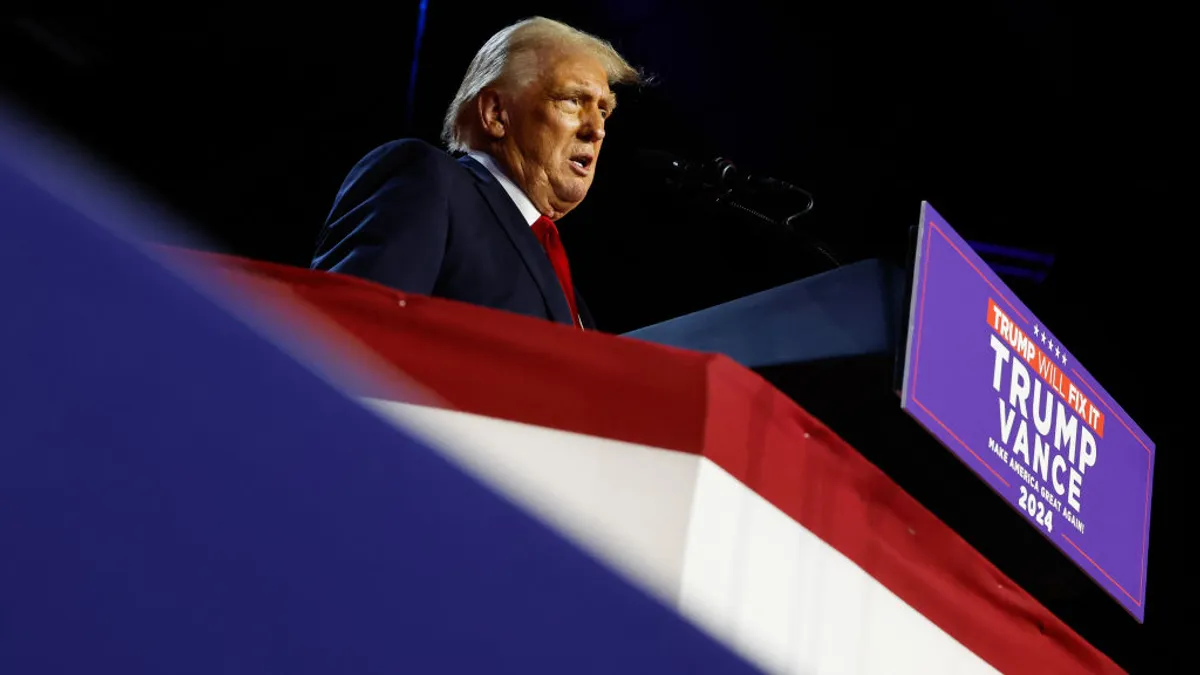Dive Brief:
- Estée Lauder said on an earnings call Wednesday it reached its global gender pay equity target for selected employee populations and achieved supplier diversity commitments through increased spending on women- and Black-owned suppliers.
- The luxury cosmetics brand reported carbon neutrality across its scope 1 and scope 2 emissions and remained committed to using 100% renewable electricity across its direct operations globally, a goal its 2023 Social Impact and Sustainability Report says it has attained for the fourth consecutive year.
- The company also announced its second Climate Transition Plan, released in conjunction with its sustainability report, further outlining the company’s environmental initiatives, such as reduced water withdrawal, increased solar energy generation and progress toward its sustainable packaging redesign.
Dive Insight:
Estée Lauder said the global pay equity target was hit across the R&D and supply chain sectors — which includes manufacturing and distribution — and other corporate functions, brands and regions. Women earned 99.2% of what comparably positioned men earned in these divisions during the fiscal year of 2023, according to the company’s sustainability report.
The company also surpassed its 2025 goal to spend $150 million on women-owned businesses, investing $162 million in 2023 already. It also exceeded the amount of capital committed to spend on Black-owned businesses to more than double what it spent last year by the end of 2023.
On the leadership front, 46% of senior leadership positions are held by women, and women represent 43.8% of its 16 board of directors — a figure that has not changed since 2021, although the number of persons of color on the board increased by one this year.
The luxury retail brand has also made headwinds on its packaging sustainability goals and is on track to achieve its 2025 goal of making 75%-100% of its packaging environmentally friendly. Currently, 71% of packaging is now recyclable, refillable, reusable, recycled or recoverable, according to the company. The brand also aims to use responsibly sourced paper products and to have 100% of its forest-based fiber cartons certified by the Forest Stewardship Council by 2025, and to reduce the amount of virgin petroleum content used in its plastic packaging to 50% or less by 2030.
The company recently launched a “Responsible Store Design,” which offers a framework for evaluating the sustainability profiles of new stores, existing retail stores and visual merchandising practices. The framework provides in-house brands an optional set of green building standards to help incorporate energy, water, waste and indoor air quality principles into day-to-day operations and in-store technology and innovation, according to the sustainability report.
Estée Lauder’s company portfolio includes over 25 prestige brands such as Clinique, La Mer, Mac, Too Faced, Jo Malone, Le Labo, Aveda and, most recently, Tom Ford — which it purchased earlier this year, the beauty company’s largest-ever deal and first fashion acquisition.
The beauty and fragrance giant was ranked among the top public companies that make ESG disclosures, landing in fifth place as a household and personal care products company on The 100 Best Corporate Citizens report. The report gathers data from the 1,000 largest publicly traded companies in the U.S. based on the Russell 1000 index, and rates them on the transparency of their environmental, social and governance disclosures.












